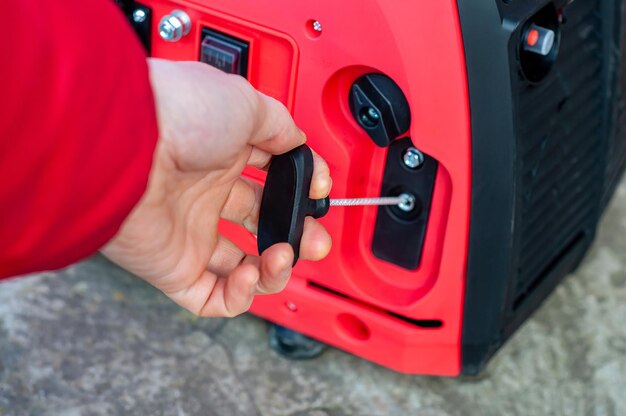Choosing the Right Generator Size for Your Refrigerator and Freezer Needs
In a world where power outages can happen anytime, owning a generator is a practical solution for keeping your essential appliances like refrigerators and freezers running. The uncertainty of when a blackout might occur makes it crucial to be prepared, especially to preserve fresh and frozen food during extended outages. But, before you rush into buying a generator, there's a key question you need to answer: What size generator do you need to effectively power both a refrigerator and a freezer? Let’s explore the considerations and options to ensure you make an informed choice.
Understanding Your Power Needs
Why Size Matters
Choosing the right size generator isn't just about picking a random model from the shelf. It's about understanding your power requirements to ensure continuous operation of your appliances. An undersized generator might struggle, leading to inefficiency and potential damage, while an oversized one could be unnecessarily expensive.
Calculating the Power Requirements
Every electrical appliance, including refrigerators and freezers, comes with a specific power requirement, usually measured in watts. Understanding this is foundational to generator selection.
Step 1: Identify Starting and Running Watts
- Running Watts: The continuous power required to keep the appliance running.
- Starting Watts: The additional surge power needed for starting the appliance's motor.
It's vital to consider both these figures. Typically, starting watts are significantly higher than running watts because the compressor in the fridge requires more energy at startup.
Step 2: Check Appliance Specifications
Most appliances have a label (usually at the back or inside) detailing their power consumption. This label is critical for accurate calculations.
Example Calculation
Consider an average refrigerator might require:
- Running Watts: 700 watts
- Starting Watts: 2200 watts (for a brief moment)
A standard freezer might require:
- Running Watts: 500 watts
- Starting Watts: 1500 watts
Total Running Watts: 700 + 500 = 1200 watts
Total Starting Watts: 2200 + 1500 = 3700 watts
Selecting the Right Generator
Prioritizing Generator Features
When selecting a generator, consider these key features beyond just wattage:
- Fuel Type: Gasoline, propane, and diesel options are available. Gasoline generators are commonly available, but propane is cleaner and more stable for long-term storage.
- Ease of Use: Features like electric starters are more convenient than pull-start models.
- Portability: Consider the weight and build of the generator if you'll need to move it frequently.
Generator Capacity Guidelines
- Small Generators (1000-3000 watts): May be suitable for a single appliance or small tools, inadequate for both a refrigerator and a freezer together.
- Medium Generators (3000-6000 watts): Can generally support both a refrigerator and freezer along with a few additional small appliances or lights.
- Large Generators (6000+ watts): Perfect for covering substantial household power needs, supporting several appliances alongside refrigeration.
How to Operate Your Generator Safely
Operating a generator safely is crucial to avoid risks such as carbon monoxide poisoning and electrical hazards. Here are simple safety practices:
- Outdoor Operation: Always use the generator outdoors in a well-ventilated area to prevent harmful fumes from accumulating indoors.
- Switch Off Before Refueling: To prevent fires, make sure the generator is off and cool before refueling.
- Regular Maintenance: Keep up with regular checks and maintenance to ensure your generator is in proper working condition.
Efficiency and Fuel Consumption
Generators consume fuel differently depending on their load. Running a generator at approximately 50-75% of its load capacity is generally more fuel-efficient. Knowing your fuel options (gasoline, diesel, propane) and their availability is also critical for long-term planning.
Estimating Fuel Needs
Fuel consumption varies with load and generator type. Typically:
- Gasoline generators might consume 0.75 gallons per hour under significant load.
- Propane variations might use 1 gallon per hour.
Keeping fuel requirements in mind ensures your refrigerator and freezer remain powered without unexpected shortages.
Practical Tips for Using Generators with Refrigeration
Smart Usage Tips for Efficiency
- Minimize openings: Keep the refrigerator and freezer doors closed to maintain temperature.
- Opt for batch cooking: If using a generator intermittently, cook larger batches to minimize usage.
Backup Plans
While generators are a reliable backup, having a plan when they might fail is wise:
- Consider cooler bags with ice packs for temporary storage.
- Share power load with neighbors if possible, or invest in additional backup battery systems for emergencies.
Summary of Key Considerations
Here's a concise breakdown featuring practical tips and key considerations for using a generator efficiently and safely:
- 🔹 Calculate: Check running and starting watts of both appliances.
- 🔹 Select: Choose a 3000-6000-watt generator for combined power needs.
- 🔹 Fuel Type: Opt for stable fuels for storage like propane.
- 🔹 Safety: Always run generators outdoors and adhere to safety protocols.
- 🔹 Maintenance: Regular checks to ensure efficiency.
- 🔹 Economy: Use at optimal capacity to conserve fuel.
In conclusion, having the right generator size ensures that life can continue more smoothly during power outages. By evaluating your needs and understanding generator capacities, you can make an educated purchase tailored to your household's requirements. Empowering yourself with this knowledge means one less thing to worry about when the power grid shuts down.
